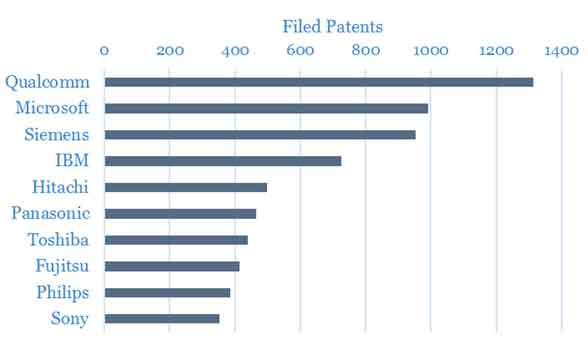Human Potential
Intellectual Property a Mass Movement for Innovation
26th April, is Intellectual Property Day. The theme for this year according to the World Intellectual Property Organization (WIPO) is 'Innovation - Improving Lives'. As an IT professional, this resonates deeply with me and contextualizes the effort of millions of people, who work with intangible software code to create tangible, positively beautiful products that improve human life.
IP is fundamental to the emerging digital world. Many technologies are required to create a product, and companies often outsource the development of components, or share technologies through licensing arrangements. IP is especially core to the e-commerce economy, which depends on companies working together to share the opportunities and risks of business through licensing.
A couple of other industries which are engaged in aggressive innovation and thus need to plan for IP are travel and engineering. Innovation in 3D printing is set to significantly improve lives. Today, 3D printing enables a house to be built in as little as 24 hours. The first model of 400-square-feet was built in Moscow recently by tech startup Apis Cor at under $ 11,000. Smart machines did the heavy lifting and built a concrete house with all the regular features. Unlike the usual practice of constructing offsite, this house was built by a mobile printer onsite. 3D printed houses offer significant hope to the 60 million displaced people of the world, particularly refugees. But on the IP side, Gartner predicts that 3D printing will result in the loss of at least $100 billion per year by 2018. This loss will be as a result of IP infringement into design patents, trademarks, copyrights and reverse engineering of equipment parts.
Paradoxically, while one side of us humans yearn to settle down, another side wishes to travel further and gain new experiences. Technology in the aerodynamic shape of the XB-1 Supersonic jet can take us at a breathtaking speed of 2,333 kph, for work or leisure, from one continent to the next. Travelers will be able to zoom from London and New York in as little as three and a half hours. The XB-1 envisages making commercial travel cost-effective. So forget about virtual reality as we now have an opportunity to get up and personal even across great distances. The XB-1 is brimming with innovation and Boom Technology Inc. will likely be investing extensively to protect their IP.
Thanks to Bill Gates wanting to tax them, robots have recently been at the heart of many heated discussions. This, even as their interaction with humans get more inextricable. Robots have moved beyond just being industrial arms to offering intelligent support. They could soon be the primary makers of food. No, I'm not referring to their role in farming, but in the kitchen. A robotic chef is slated to be commissioned shortly this year and its 129 sensors and 20 motors promise to cook 2,000 mouthwatering recipes. Imagine a cruise liner, a music festival or a refugee camp and the role of a robotic chef becomes invaluable. As the field of robotics gets more sophisticated and we humans begin to increasingly rely on them, manufacturers of robots and companies engaged in advanced robotics will need IP regulations to protect their interests.
The most recent innovation improving lives is machine learning. Here, technology is ensuring access to products, simplifying delivery and introducing convenience. IP is playing a central role in all AI-related innovation, and the graph below published by ClearViewIP in Feb. 2017 indicates that companies are protecting their innovation by filing AI-related patents.

Innovation through automation and AI has the potential to release humans from the drudgery of repetitive effort and channelize their creativity and skills to create something new. The driving goal of technology is to amplify the human spirit and potential. But the IP question is still hotly debated - Since the algorithm is self-learning, who should apply for the patent, the engineer or the algorithm? If the AI algorithm is aware and being creative why should rights not be accorded to it? And so on.
This years' theme of World Intellectual Property Day, 'Innovation - Improving Lives' ties into Infosys' belief in letting a 'thousand flowers bloom'. We believe that ideas should be freely available to be used and built upon to solve problems faced by humanity. Innovation is not an intrinsic skill that one is born with, but rather one that can be taught, trained in, and honed. Our Design Thinking (a technique that nurtures innovation) and Zero Distance (an organization-wide movement to enable innovation at all levels) initiatives, progressively strengthen each other, and are outcomes of this core belief.
Every employee in the company has the opportunity to attend a Design Thinking workshop. The objective is to empower employees to proactively empathize with end users, be it our clients or our client's client, and address even their tiniest pain-point. Imagine when 200,000 employees are empowered to identify such innovation possibilities. The intellectual property movement no longer remains isolated to a few, but becomes a mass movement. The benefit to Infosys' clients is smarter solutions that can save thousands if not millions of dollars. For end users, it reduces effort, improves UX and sometimes even cost.




